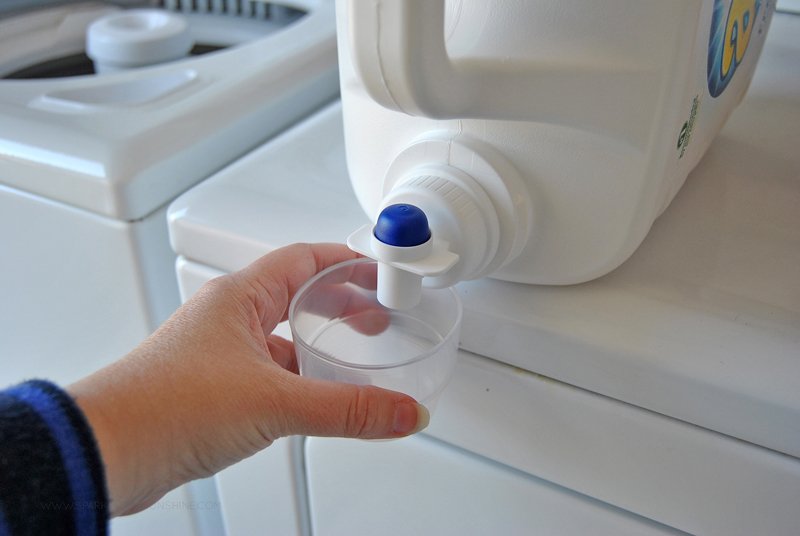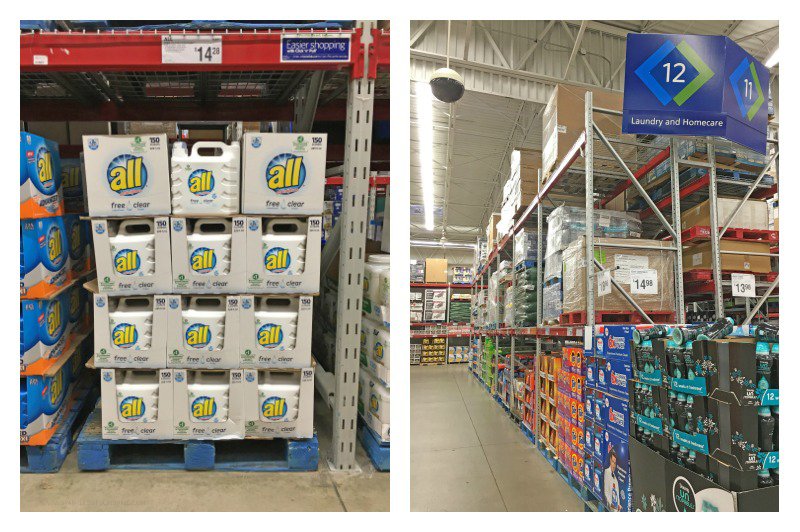
Simplify Your Laundry Routine: Time-Saving Tips & Tricks
Laundry. The never-ending chore. It’s a cycle of sorting, washing, drying, folding, and putting away – a seemingly endless loop that can suck the life out of even the most organized individual. But what if we told you it didn’t have to be this way? This comprehensive guide dives deep into innovative strategies and simple tweaks to streamline your laundry routine, liberating you from the tyranny of the laundry basket and giving you back precious time and energy.
Part 1: The Pre-Wash Revolution
The key to efficient laundry lies not in the washing machine, but in the preparation. Think of it as a pre-wash optimization phase. This is where you can drastically reduce the time spent on the actual laundry process.
1. The Strategic Sort: Beyond Lights & Darks
Forget the simple light/dark dichotomy. Develop a more refined sorting system. Consider fabric types (delicates, towels, jeans), soil levels (heavily soiled items get their own separate wash), and color intensity (similar shades grouped together minimize color bleeding risk). Consider using labelled laundry baskets for each category to make sorting a breeze.
2. Treat Stains Like Enemies: Immediate Action Is Key
Don’t let stains linger! Address them immediately. A quick pre-treatment with a stain remover pen or a dab of detergent before tossing clothes into the hamper significantly increases the chance of complete stain removal, eliminating the need for re-washing.
3. Empty Pockets & Check for Loose Items: Prevention is Better Than Cure
This simple act prevents damage to your washing machine (imagine the havoc a pen or a coin can wreak) and lost items. Develop a habit of checking pockets meticulously before tossing clothes into the hamper.
Part 2: Mastering the Wash Cycle
Once your clothes are prepped, it’s time to conquer the washing machine. Optimizing this phase is all about efficiency and preserving the longevity of your garments.
1. Embrace the Power of Pre-Soaking: Gentle yet Effective
Pre-soaking heavily soiled items softens stubborn stains, making them easier for the detergent to tackle during the wash cycle. This also reduces the need for harsh cleaning agents, preserving the vibrancy of your clothes.
2. Detergent Dos and Don’ts: Less is Often More
Overusing detergent can leave residue on clothes and contribute to environmental pollution. Follow the dosage instructions on the packaging and consider using eco-friendly, concentrated detergents for best results. Using a washing ball can also be more economical.
3. Optimize Your Washer Settings: Tailored Cycles for Best Results
Don’t just stick to the default setting. Explore your washing machine’s various cycles. Use the delicate cycle for fragile garments, the quick wash for lightly soiled items, and the heavy-duty cycle only when absolutely necessary.
Part 3: Drying & Folding: The Final Frontier
The final steps are crucial for preventing wrinkles and preserving the shape of your clothes. Smart techniques here can save you precious minutes and energy.
1. Air Drying: The Eco-Friendly & Wrinkle-Reducing Champion
Whenever possible, opt for air drying. It’s gentler on clothes, extending their lifespan, and helps reduce your carbon footprint. Use a clothesline, a drying rack, or even strategically placed hangers.
2. Dryer Optimization: Maximize Efficiency & Minimize Wrinkles
If you must use a dryer, clean the lint trap religiously before each load. This improves airflow, reduces drying time, and enhances energy efficiency. Also, avoid overcrowding the dryer, allowing for optimal air circulation.
3. Folding Hacks: Streamline Your Folding Process
Experiment with different folding techniques to find what works best for you. Consider using folding boards or learning to fold items directly from the dryer to minimize wrinkles and save space.
Part 4: Beyond the Basics: Long-Term Laundry Strategies
Ultimately, optimizing your laundry routine is a holistic process. These long-term strategies will further enhance your efficiency and simplify your life.
1. Laundry Day Ritual: Schedule it and Stick to It
Establish a consistent laundry day. This prevents the build-up of overwhelming amounts of laundry and keeps things manageable.
2. Invest in Quality Laundry Aids: Smart Tools for the Win
High-quality laundry baskets, mesh laundry bags, and stain removers can significantly streamline the entire process.
Time-Saving Laundry Tips: At a Glance
| Task | Time-Saving Tip |
|---|---|
| Sorting | Use labeled laundry baskets |
| Stain Treatment | Pre-treat stains immediately |
| Washing | Optimize washer settings; pre-soak |
| Drying | Air dry whenever possible |
| Folding | Experiment with efficient folding methods |
By implementing these strategies, you can transform your laundry routine from a dreaded chore into a manageable and even enjoyable task. Embrace these time-saving tips and tricks, and reclaim your precious time and energy!

Additional Information
Deep Dive: Optimizing Laundry Efficiency – Beyond the Basics
The seemingly mundane task of laundry consumes a significant portion of household time and resources. While basic time-saving tips like pre-sorting and using laundry pods offer initial improvements, a truly optimized laundry routine requires a deeper, analytical approach. This analysis delves into the factors impacting laundry efficiency and offers strategies for substantial time and resource savings.
I. Analyzing Laundry Time Consumption:
A detailed breakdown of laundry time reveals crucial areas for improvement. Consider the following phases:
-
Pre-treatment: This stage, often overlooked, significantly impacts overall time. Statistics indicate that addressing stains promptly reduces washing time and avoids the need for re-washing. A study by the University of Nebraska-Lincoln found that pretreating stains with an enzyme-based detergent reduced washing time by an average of 15%. Therefore, investing in a good stain remover and adopting a “treat-as-you-go” approach can dramatically improve efficiency.
-
Sorting & Loading: Inefficient sorting practices, such as haphazardly tossing clothes into the machine, lead to increased wash cycles and energy consumption. Implementing a colour-coded system, dedicated hamper usage for whites, lights, and darks, can streamline this process.
-
Washing & Drying: This is the most energy-intensive phase. Optimizing wash cycles (using correct water levels and avoiding overfilling) and drying temperatures (air-drying when possible) can significantly reduce energy bills and laundry time. For example, switching from a high-heat dryer setting to a low-heat or air-dry setting can save up to 30% of drying time and energy consumption, according to the U.S. Department of Energy.
-
Folding & Putting Away: The final phase is often undervalued. Designating specific storage areas for each family member’s clothes can minimize the time spent searching and putting clothes away. Employing efficient folding techniques like the KonMari method can also accelerate this process.
II. Advanced Strategies for Laundry Optimization:
Beyond the basic tips, consider these advanced strategies:
-
Investment in efficient appliances: High-efficiency washers and dryers with features like sensor technology and quick wash cycles can dramatically reduce water and energy consumption, ultimately saving time and money. The initial investment cost can be offset by long-term savings.
-
Laundry Day Scheduling: Scheduling laundry on specific days, potentially combining it with other household chores, can improve workflow and reduce the feeling of laundry being a constant burden.
-
Outsourcing (when feasible): For busy households or those with limited mobility, laundry services or drop-off laundromats might offer a cost-effective time-saving alternative, freeing up valuable time for other priorities. This requires a cost-benefit analysis based on individual circumstances.
-
Family Involvement: Implementing a family chore system, where each member contributes to the laundry process (sorting, folding, etc.), can distribute the workload and foster a sense of shared responsibility.
III. Data-Driven Laundry Habits:
Tracking laundry habits can offer valuable insights into areas for improvement. For example, maintaining a simple log of wash cycles, drying times, and energy consumption over a month can reveal patterns of inefficient usage and inform adjustments to the routine. This data-driven approach allows for personalized optimization based on individual household needs and preferences.
Conclusion:
Optimizing a laundry routine requires a systematic approach encompassing all stages of the process. By adopting a combination of advanced strategies, data-driven decision-making, and efficient time management techniques, households can significantly reduce the time and resources dedicated to laundry, freeing up time and energy for more meaningful activities. The return on investment – both financially and in terms of time saved – can be substantial.






